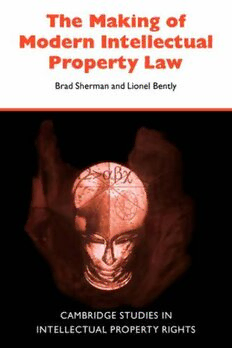
The making of modern intellectual property law: the British experience, 1760–1911 PDF
263 Pages·1999·1.143 MB·English
Most books are stored in the elastic cloud where traffic is expensive. For this reason, we have a limit on daily download.
Preview The making of modern intellectual property law: the British experience, 1760–1911
Description:
One of the common themes in recent public debate has been the law's inability to accommodate the new ways of creating, distributing and replicating intellectual products. In this book the authors argue that in order to understand many of the problems currently confronting the law, it is necessary to understand its past. This is its first detailed historical account. In this book the authors explore two related themes. First, they explain why intellectual property law came to take its now familiar shape with sub-categories of patents, copyright, designs and trade marks. Secondly, the authors set out to explain how it is that the law grants property status to intangibles. In doing so they explore the rise and fall of creativity as an organising concept in intellectual property law, the mimetic nature of intellectual property law and the important role that the registration process plays in shaping intangible property.• First detailed historical account of "IP" (the post-1911 book should be written in time)• Two young scholars' widely respected in their joint presentation of these ideas /now written up• Offers a number of important lessons for current debates in the area
See more
The list of books you might like
Most books are stored in the elastic cloud where traffic is expensive. For this reason, we have a limit on daily download.
